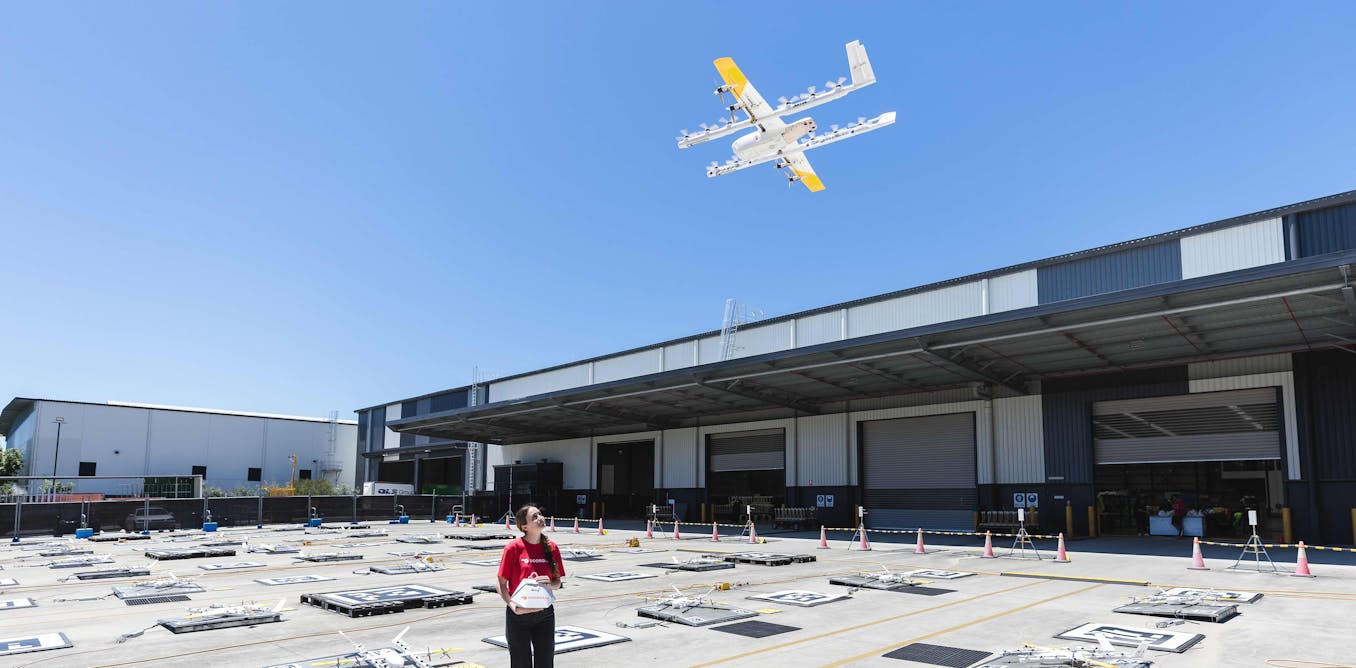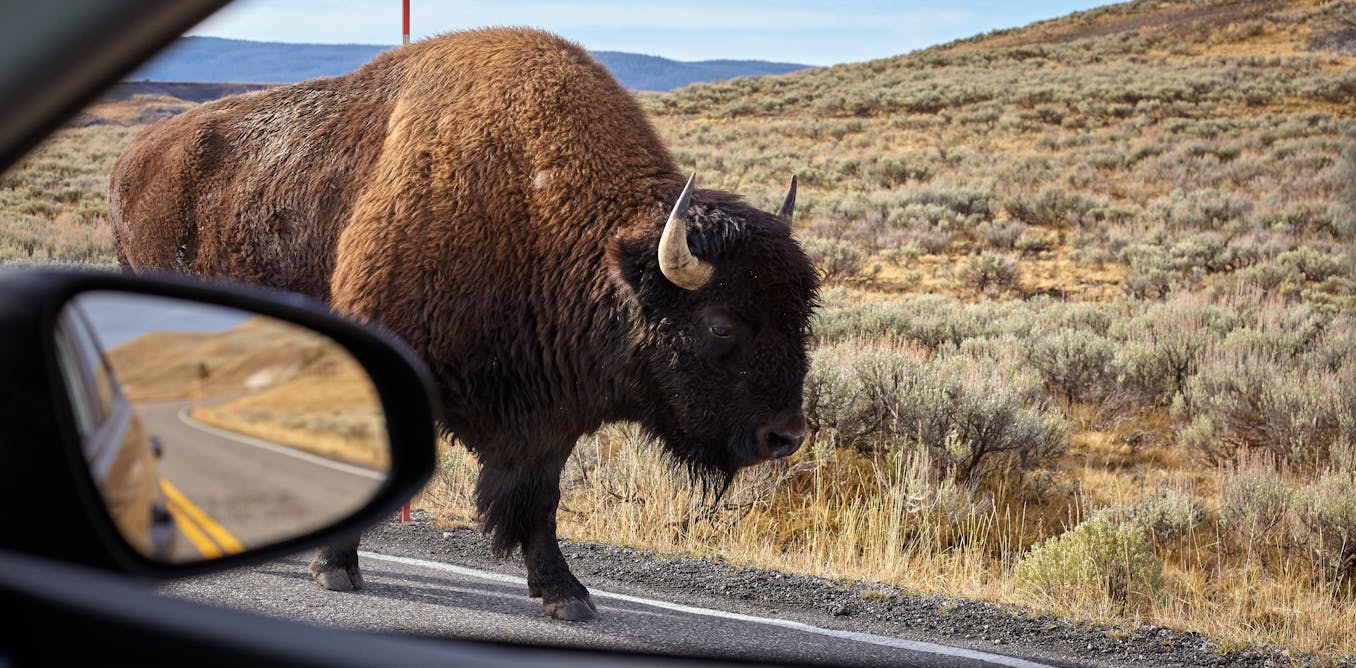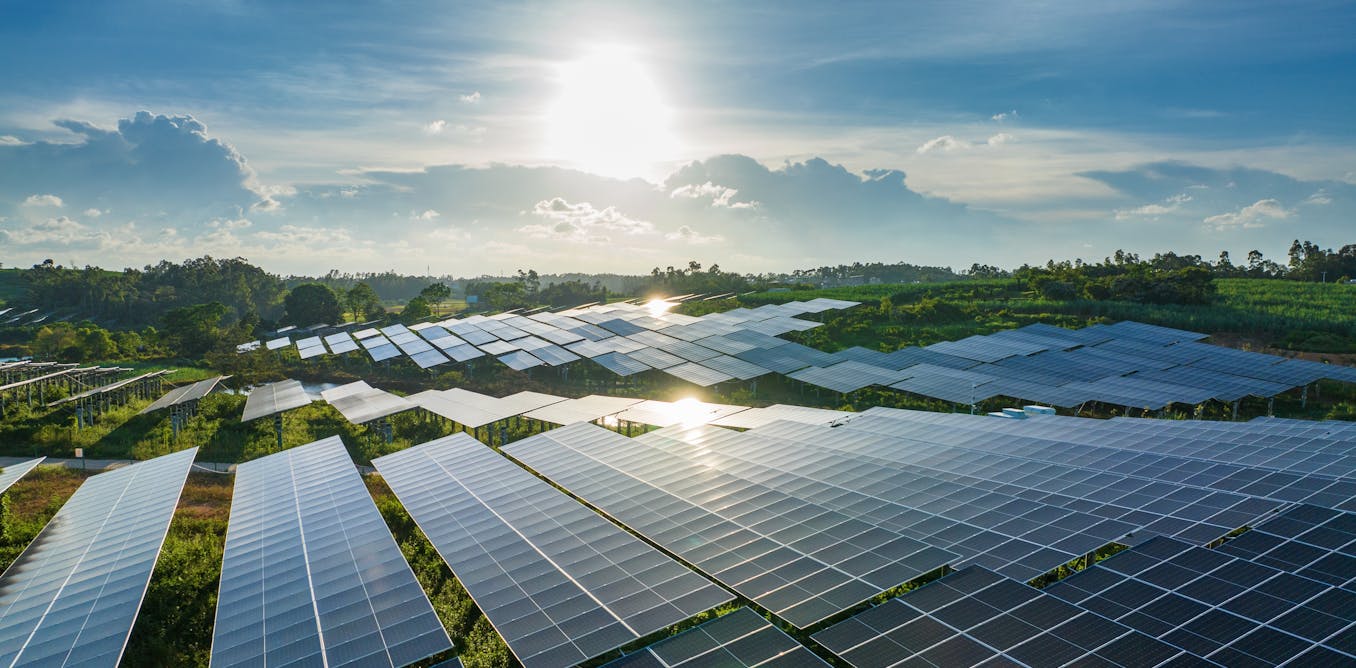The dark mystery behind the 9 uninhabited states in the United States is a captivating exploration of the unique characteristics and challenges facing some of the most sparsely populated states in the nation. From the rugged wilderness of Maine to the wide-open spaces of Wyoming, each state offers a glimpse into the untamed beauty and harsh realities of life in the American West.
This video delves into the economic, cultural, and environmental factors that have contributed to these states remaining largely uninhabited. From the allure of remote work and the impact of shifting population dynamics to the challenges of harsh winters and limited job opportunities, each state presents its own set of complexities and contradictions.
Despite their low population densities, these states have a rich tapestry of history, culture, and natural beauty that continues to attract a certain demographic seeking a quieter, more grounded lifestyle. Whether it’s the quiet life of Vermont, the corporate haven of Delaware, or the cold attraction of northern states, each state offers a unique perspective on what it means to live in the vast, untamed wilderness of America.
Join us on this journey of discovery as we uncover the dark mystery behind the 9 uninhabited states in the United States and unravel the secrets of these enigmatic regions. Subscribe now and let the adventure begin!
Watch the video by Top Discovery
According to a study published in nature cities a new online journal the places that people live in in the US could change significantly over the next few decades with the population declining it could be because of our current circumstances with a pandemic times are seeming to be a lot more
Difficult the US has recorded its lowest rate of population growth since the nation’s founding Census Bureau predicts that a population decline is coming for the US according to new data released by the Census Bureau the numbers of Americans is likely to start shrinking by the end of the century in a country
As vast and diverse as the United States it’s a puzzle why almost half of it remains sparsely populated this exploration delves into the shadows and lights of the nine uninhabited States revealing the Mysteries behind their empty expanses number one the Enigma of Maine’s vast Wilderness Maine has almost
Always ranked among the top two or three states in the country for Safety and Security but when it comes to work and Health some recent statistics paint a bit of a different picture Maine known for its picturesque Landscapes that include dense forests Rocky coastlines and Serene glacial lakes stands as a
State of stunning Beauty and Stark contrasts with a population density that pales in comparison to more urbanized regions Maine’s vast Wilderness holds a certain Enigma that beckons closer examination one primary reason behind Maine’s low population density is its harsh Winters the state’s location at the northeastern tip of the United
States exposes it to brutal winter conditions reminiscent of those found in Game of Thrones long cold and Relentless these Winters not only discourage yearr residency but also limit the scope of Agriculture and other Industries while Southern Maine and areas along the coast enjoy somewhat milder conditions allowing for denser populations and more
Vibrant communities the interior remains a rugged unforgiving Wilderness Main’s economy has historically relied heavily on forestry which while significant does not require large populations to manage the timber industry vital for both paper and lumber has shaped the state’s economic landscape but offers limited employment opportunities compared to more Diversified Urban
Economies this Reliance on a singular industry May contribute to the state’s lower population as job Seekers look towards regions with broader opportunities the rugged landscape of Maine while beautiful presents its own set of challenges the state’s natural features including its vast forests and Rocky terrains make large scale development and
Infrastructure projects more difficult and costly this has led to a preservation of natural beauty but also a hindrance to Rapid growth and urbanization seen in other states however it’s this very charm of Main’s Wilderness that attracts a certain demographic Adventure Seekers nature lovers and those wishing to escape the
Hustle and bustle of City Life find solace in Maine’s untouched lands the state offers an unparalleled connection to Nature with opportunities for hiking camping and Wildlife observation that are among the best in the country number two Montana the Big Sky country’s Solitude Montana often referred to as Big Sky country presents an intriguing
Paradox its vast unending Landscapes under the Grandeur of an expansive Sky jux deposed against one of the lowest population densities in the United States this Solitude amidst Beauty encapsulates Montana’s unique standing the state larger than Japan is home to just over a million residents creating a sense of isolation that is both alluring
And challenging the Allure of Montana lies in its Cowboy dreams and the promise of a life connected to the sprawling Untamed Wilderness the state’s stunning scenery from the Rocky Mountains to the Great Plains calls to those with a spirit of adventure and a yearning for a simpler more grounded
Existence this romanticized view of life in Montana with its wideopen spaces and close-knit communities continues to attract individuals seeking to live amidst nature however the reality of living in Montana is tempered by economic and climatic challenges the state’s economy heavily reliant on agriculture tourism and a burgeoning
Tech sector does not offer the bread of opportunities found in more urbanized regions job Seekers may find the options limited and the distances between cities and amenities can be daunting the climate too presents its own set of challenges with cold harsh Winters and a rugged landscape that demands resilience from
Its inhabitants despite these challenges Montana’s population density of just 7.5 people per square mile contributes to a lifestyle that many find liberating the Solitude afforded by such a vast landscape allows for a deep connection to the environment unmatched privacy and a sense of community that is hard to
Find elsewhere yet the very factors that make Montana appealing to some its isolation and economic structure also make it a difficult choice for those seeking the conveniences and opportunities of urban living number three Rhode Island’s peculiar case of density and decline Rhode Island the smallest state in the United States
Offers a stark contrast to the expansive Solitude of places like Montana with a population density second only to New Jersey Rhode Island is a densely populated state where urban life predominates despite its small size the state has managed to carve out a unique identity known for its Rich history
Vibrant cultural scene and beautiful Coastal Landscapes however Rhode Island faces its own peculiar challenges a declining population and a High Cost of Living the state’s population density might suggest a thriving Urban environment that continues to attract new residents however Rhode Island has seen a slow but steady decline in its
Population this decline is partly attributed to the High Cost of Living comparable to that of New York City which has made it difficult for many residents to afford the lifestyle the state offers housing in particular has become increasingly expensive pushing out younger demographics in search of more affordable living options another
Factor contributing to Rhode Island’s population decline is its economic landscape while the state boasts Industries such as healthc care education and tourism job growth in high-paying sectors has been sluggish making it less attractive to professionals seeking career advancement this economic reality coupled with the state’s small size and limited space for
Expansion has created a challenging environment for sustained population growth despite these challenges Rhode Island remains a desirable place to live for those who value its unique blend of urban convenience and Coastal Beauty the state’s dense population has fostered a close-knit community atmosphere with a rich tapestry of cultural and social
Activities its educational institutions historical sites and culinary scene continue to draw visitors and residents alike number four Delaware Corporate Haven population desert Delaware the second smallest state in the US presents a fascinating Paradox it is a magnet for corporations worldwide yet remains one of the less populated states this
Anomaly is rooted in Delaware’s unique legal framework and business-friendly tax laws which have attracted more than a million registered corporations including over 60% of Fortune 500 companies despite this corporate influx Delaware’s resident population remains modest hovering around 1 million people the Allure for businesses lies in the Delaware Court of ch
An esteemed business court that has over 200 years of legal precedence providing a predictable and efficient legal environment for corporate litigation Additionally the state’s favorable tax policies including no State corporate income tax for companies that operate outside its borders make it an attractive domicile for businesses seeking to minimize tax
Liabilities however this corporate Boon has not translated into a booming resident population while Wilmington Delaware’s largest city boasts a vibrant business district it has a relatively small population the city alongside others in the state struggles with challenges common to Urban centers such as affordable housing and access to high
Quality education which can deter potential residents moreover Delaware’s position outside major metropolitan areas like Philadelphia and Baltimore means it often gets by past by those seeking the amenities and opportunities of larger cities despite its business-friendly environment Delaware lacks the extensive Urban infrastructure and cultural attractions that draw
People to live and work in more populous states number five the Great Plains empty quarter South Dakota South Dakota situated in the heart of the Great Plains is emblematic of the American frontier Spirit known for its fertile farmlands rich mineral resources and iconic landmarks such as Mount Rushmore South Dakota’s economy has historically
Been anchored in Agriculture and Mining despite these abundant natural resources and attractions South Dakota remains one of the least populated states in the US with a population density that underscores its vast open Landscapes agriculture the backbone of South Dakota’s economy has shaped the state’s demographic patterns the rural nature of
Farming and the requirement for large tracts of land mean that significant portions of the state are sparsely populated mining particularly in the Black Hills has also played a crucial role in the state’s economy but similarly requires fewer people to operate Modern Machinery than in the past the state’s low population density
Is further influenced by its geographical location situated far from major Urban Centers South Dakota lacks the pull factors that attract populations to more more densely populated areas such as diverse job markets and urban amenities Additionally the state’s weather extremes with harsh Winters and hot summers pose challenges
To daily living and are not suited to everyone’s tastes despite these factors South Dakota’s Open Spaces low cost of living and landmark attractions continue to draw tourists and a steady stream of new residents looking for a quieter more relaxed Lifestyle the state offers a unique blend of natural beauty
Historical significance and a slower pace of life that appeals to those seeking an escape from the hustle and bustle of City living number six the digital Frontier remote work and population Dynamics in sparse States in recent years a transformative trend has emerged reshaping the population Dynamics and economic Landscapes of some
Of America’s most sparsely populated states the rise of remote work accelerated by technological advancements and further catalyzed by global events such as the covid-19 pandemic has begun to alter the traditional constraints of geography on where people choose to live and work this chapter delves into how this digital Frontier is impacting States
Known for their wide openen spaces and low population densities potentially ushering in a new era of growth and diversity the Advent of high-speed internet and collaborative Technologies has made it possible for Professionals in a wide range of Industries to work from virtually anywhere this shift has significant implications for States like
Wyoming Montana and Vermont which offer an appealing quality of life but have historically been limited by their remote locations and the availability of traditional employment opportunities as remote work becomes more normalized these states stand gain as attractive destinations for those seeking the peace Beauty and Community they offer without
Sacrificing their careers the influx of remote workers brings a new economic Dynamic to these sparsely populated states firstly it diversifies the economic base beyond the traditional sectors of Agriculture Mining and tourism this diversification can lead to a more resilient local economy less susceptible to the boom and bust Cycles
Associated with commodity prices and tourism Trends furthermore the spending power of remote workers who often bring salaries from higher paying Urban markets can stimulate local economies support small businesses and Foster entrepreneurship in areas previously limited by their small local customer bases however the potential population growth driven by remote work also
Presents challenges infrastructure particularly in terms of broadband access and health care may need significant investment to support an increasing population there’s also the risk of economic displacement for local residents as housing prices may rise with increased demand potentially pushing out those who have lived in these communities for Generations
Additionally there’s the cultural impact to consider the influx of new residents with different backgrounds and values can enrich a community but also strain social cohesion and local Traditions balancing growth with the preservation of the community character and natural environment that make these states attractive in the first place is a
Delicate task the rise of remote work is not just changing where people live it’s also influencing the cultural fabric of these communities new residents bring with them diverse perspectives talents and innovations that can invigorate local Arts education and Civic life this cult cultural infusion can make sparsely populated states more vibrant and
Dynamic attracting even more newcomers in search of a fulfilling lifestyle that blends the best of rural Tranquility with global connectivity number seven Vermont the Green Mountain States quiet life Vermont often celebrated for its pastoral Landscapes and vibrant autumn colors stands as a testament to the Allure of Rural America the Green
Mountain State with its low Urban population ratio offers a quiet life that seems increasingly rare in the fast-paced modern world Vermont’s geography climate and culture collectively shape a way of life that many cherish but few choose to live contributing to its unique demographic patterns Vermont’s rural charm is no
Accident it is a product of both deliberate policy and geographical circumstance approximately 77% of the state is forested providing a backdrop of lush greener that changes dramatically with the seasons small towns and Villages dot the landscape each with its own character and Community unlike many states where urbanization has sprawled uncontrollably
Vermont has maintained a strict policy on land use preserving its rural character and limiting the growth of large Urban centers the state’s largest city Burlington is home to just over 42,000 residents embodying a small town field with the amenities of a larger City this commitment to maintaining green spaces and promoting local
Economies has preserved Vermont’s charm but also limited its Urban population ratio Vermont’s geography characterized by the Green Mountains running through the center of the state plays a significant role in shaping its population distribution these mountains while providing stunning Vistas and a Haven for outdoor Enthusiast also make large-scale development challenging the
Rain is rugged and the soil outside of the Champlain Valley is not always conducive to agriculture which historically has been small scale and focused on Dairy farming this geographical limitation has meant that population centers are small and dispersed with many vermonters living in rural areas or small towns rather than
In urban environments the climate in Vermont further influences its appeal and challenges as a place to live Winters are long and cold with heavy snowfall that transforms the state into a winter sports Paradise but also requires a level of hardiness from its residence the short cool summers are a
Rest bite offering spectacular beauty and a plethora of outdoor activities from hiking to kayaking however the severity of the winter months can be a deterrent for those not accustomed to or prepared for the demands of a northern climate this climate while contributing to Vermont’s Scenic Beauty undoubtedly plays a role
In keeping its population growth steady but modest choosing to live in Vermont is often a lifestyle Choice one that values Community the natural environment and a slower pace of Life over the hustle and bustle of urban living vermonters take pride in their State’s environmental stewardship local food
Movement and the high quality of life the state has a strong identity rooted in self-sufficiency community support and a deep connection to the land which attracts a certain demographic however this lifestyle is not for everyone the economic opportunities in Vermont are more limited compared to larger more urbanized States the cost of living
Particularly housing can be high relative to local wages and the job market is more constrained focusing on Education Health Care and smallscale Manufacturing young vermonters often leave the state for college or employment opportunities elsewhere though some return seeking the quality of life they remember from their upbringing number eight Wyoming wide
Open spaces and sparse faces Wyoming a state synonymous with wide open spaces and a sky that stretches into Infinity offers a living tapestry of the American West that is both beautiful and harsh with the smallest population of any US state Wyoming’s low density is not just
A statistic it’s a way of life this chapter delves into the factors behind Wyoming’s sparse population its economic backbone and the lifestyle that its inhabitants have embraced Wyoming’s Landscapes are as varied as they are vast from The Towering peaks of the Grand Tetons to the sprawling plains
That seem to defy the Horizon this geographical diversity while a boon for tourism and a Haven for wildlife contributes to the state’s low population Den City the shear scale scale of the land versus the number of inhabitants creat a scenario where one can travel miles without encountering another Soul encapsulating the essence
Of solitude that defines much of the American West the sparse population is partly due to the state’s economic structure heavily reliant on mining Agriculture and tourism these sectors while critical to the states economy do not require the dents urban populations seen in more Industrial ized or service oriented States the energy sector
Particularly coal oil and natural gas dominates the economic landscape providing high-paying jobs that attract workers from Across the Nation however these industries are also subject to the whims of global markets leading to boom and bust cycles that can be challenging for long-term population growth Wyoming’s economy is a double-edged
Sword on one side it offers lucrative opportunities in natural resource extraction and a no personal or corporate state income tax policy that is attractive to businesses and individuals alike on the other it faces challenges such as economic diversification and the impacts of climate change on its key sectors the
Reliance on natural resources has made the state’s economy vulnerable to external pressures including fluctuating commodity prices and shifting energy policies that favor renewable sources the the agricultural sector focused on cattle ranching and hay production underscores the state’s rural character it’s a testament to the rugged individualism and self-reliance that are
Hallmarks of Wyoming’s culture however this way of life is not conducive to attracting large numbers of new residents especially those accustomed to the conveniences of urban living life in Wyoming is defined by a deep connection to the Natural World residents often site the quality of life as a primary
Reason for living in the state including access to unparalleled outdoor recreation the beauty of the natural environment and a sense of community that is hard to find in more populated areas wyomingites embody a spirit of Independence and self-sufficiency with a culture that values personal freedom and responsibility the state’s low
Population density also means that communities are tightly knit with neighbors relying on each other in ways that might be unfamiliar in larger cities this sense of community along with a shared respect for the land and its resources creates a strong social fabric that binds the people of Wyoming
Together however this lifestyle is not without its challenges the remoteness of many communities can make Access to Health Care education and other services more difficult than in more densely populated areas the harsh Winters and sometimes unpredictable weather can also be daunting for those not accustomed to the rigors of Rural
Life number nine Beyond borders the cold attraction of northern states the northern states of the United States characterized by their cold climates sprawling Landscapes and lower population densities share a common thread that goes beyond mere geography this unique combination of climate culture and economy sets them apart from their more populous counterparts further
South this chapter explores the cold attraction of these northern states delving into how their chilly climates influence the lifestyle economy and cultural identity of their residents the cold climates of northern states such as North Dakota Alaska and Maine are both a defining characteristic and a determinant of the lifestyle within
These regions harsh Winters characterized by heavy snow fall and freezing temperatures have historically shaped the settlement patterns with populations clustering in areas where the impact of the cold is mitigated by geographical features or human Innovation this climate has fostered a culture of resilience and self-reliance among the residents who have adapted to
The challenges of their environment with Innovations and housing transportation and food sourcing the cold also dictates the Rhythm of Life life with winter sports such as skiing ice hockey and snowmobiling deeply embedded in the cultural fabric of these states seasonal activities and festivals celebrate the snowy landscape turning the cold from a
Challenge to be endured into an asset to be celebrated however this adaptation to the cold is not for everyone limiting the influx of new residents and contributing to the lower population densities characteristic of these regions economically the cold climates of northern states have both benefits and drawbacks on one hand Industries
Such as tourism winter sports and energy extraction particularly in areas rich in oil and natural gas like Alaska and North Dakota thrive in these conditions the cold also preserves natural resources with the northern forests and waterways supporting robust logging fishing and water-based energy production industries on the other hand
The cost of living in these cold climates can be higher than the national average driven by the need for specialized infrastructure heating costs and the transportation of goods over long distances these economic challenges can deter businesses and individuals from relocating to these states further contributing to their lower population
Densities the cold climates of these northern states play a significant role in shaping their cultural identity the shared experience of enduring and embracing the cold creates a sense of community and belonging among residents this has led to a strong Regional identity with Traditions folklore and a sense of humor that often revolves
Around the challenges of the climate moreover the stunning natural beauty of these regions from the auroras of Alaska to the snowy forests of Maine inspires a deep appreciation for the environment among its inhabitants this has fostered a culture of environmental stewardship and Outdoor Adventure further defining the lifestyle and values of the region
Video “The dark mystery behind the 9 Uninhabited States in the United States” was uploaded on 03/04/2024 to Youtube Channel Top Discovery






































